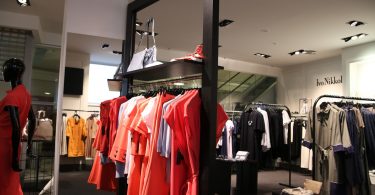With the latest news of Chris Moyles’ departure from the Radio 1 breakfast show, the BBC station is being continuously mentioned in the press for its aging listeners.
With the latest news of Chris Moyles’ departure from the Radio 1 breakfast show, the BBC station is being continuously mentioned in the press for its aging listeners. As recent statistics show that the average age of a Radio 1 listener stands at 32, higher than the target audience of 15-29, the press are quick to judge that Radio 1 must be doing something wrong in engaging a younger demographic, or that teenagers and ‘youths’ won’t be interested in the radio industry for much longer.
This couldn’t be more wrong.
Not only am I a huge fan of BBC Radio 1, but I’m a radio enthusiast with a dream to work as a radio producer in years to come. It could seem that my view is biased; however, I’m not the only one and there are plenty of other teenage, budding radio stars out there in the UK.
With so many new fresh opportunities being introduced to radio, the industry is going from strength-to-strength.
Social media has a consistently growing role in radio. The use of Facebook and Twitter have an immense impact on the shows themselves, as well as giving immediate response and feedback to the stations, presenters and producers, which can be used instantaneously.
And vice versa; most importantly is the impact that radio has on the social networking sites too. By taking a look at the ‘trends’ on Twitter, once you’ve escaped the daily 1D and Bieber tweets, you can often find the names of artists being interviewed on Radio 1 and even more notably, artists playing in Fearne Cotton’s Live Lounge. By clicking on the link or hashtag, with some radio features such as the Live Lounge making use of this twitter feature, a feed of discussions and opinions of the show appear at once.
Twitter really comes to life during a media-frenzy. The X Factor, the Olympics and other key TV and sporting events always dominate the Twitter trending topics. On July 11th, one of these media frenzies occurred as Chris Moyles stepped down from the breakfast show, with Nick Grimshaw being announced as his replacement. As a controversial media figure, everybody had something to say about Moyles’ exit, causing a stir as the UK’s top trend for most of the next 24 hours. Such a reaction would not come from a media ‘doomed to burst’; this proves just how popular radio really is.
Another sensation that radio has been introduced to over the past few years is the use of visual media. Surprising for a radio show, you may say, but every day on the Radio 1 website, you would be able to watch a segment or a feature streamed live on a video link on their homepage. The BBC Red Button has also been of frequent use to Radio 1, with a 52-hour, strangely addictive, live feed being used during Chris Moyles and Comedy Dave Vitty’s world-record breaking marathon radio show.
A Facebook page, titled ‘We want The Chris Moyles show on the Red Button every day’, has just under 3000 likes, proving the popularity of making radio visual. Some people may argue that radio is just becoming TV, however visual radio is very different; the insight into the studio and the feeling of snooping into an unseen world is incredibly compelling, engaging and fascinating.
It’s not just the young radio enthusiasts who understand the enormous involvement that radio plays in our day-to-day lives, but also the artists who are played on the stations. Since Top of the Pops was taken off air, the need for artists to have their music shared to the country has been left to radio. Although it is necessary to create an interesting, attractive music video to be shown on MTV, the necessity to appear on the Radio 1 playlist is additionally significant.
Split into an A, B and C list, an artist’s weekly play count depends on their position in the playlist. A weekly playlist meeting with producers is the judgement day for musicians hoping to achieve a chart hit. The impact of Radio 1 on the chart positions of certain songs is extraordinary, so it is understandable that artists today become so motivated to achieve a spot on the list, as seen above with the tweet from pop group Scouting For Girls.
In the words of Radio 1 fanatic, Gerald Somers, “radio has a long way to go yet”. Gerald, who writes his own blog about Radio 1 news, said: “Radio is fun, interactive and becomes a companion in a strange sort of way.”
This idea of radio providing companionship is shared by even more radio enthusiasts, including Amy Byford, 18, and Maddie Faiers, 19, both from Essex. Maddie, a presenter on Keele University’s student radio station, KUBE, said: “Radio is an essential part of my daily life. It provides me with the news, music that I love, as well as new music I may not know, entertainment, debates and company. I feel like the presenters are my friends!”
Amy said: “I think people take it for granted sometimes. Without radio, many people would get into their car for a long journey and not have a presenter talking to them.” As an aspiring radio producer, like myself, Amy continued: “Although it is a hard industry to get into, I believe that if you want something enough, you will be successful.”
Just like Amy, James Lewis from Bristol, has great aspirations for reaching his career goal. “My dream for the future is to present on BBC Radio 1. I am immensely determined to achieve this aim, and will stop at nothing to ensure that I, one day, will broadcast a show on Radio 1.”
The immense passion for developing a career in the radio industry is held by so many young individuals, making these positions so sought after, proving that the ‘youth radio bubble’ is continuing to grow.
A love shared by many teenage and student radio fanatics is radio’s vast scope of creativity and the immediacy that allows for this creativity to be shared.
James continued: “The main reason that I love radio as a medium is that it is so immediate and therefore I can directly interact with listeners and improvise and change my show depending on how the listeners react. This lends radio a more personal feel that I think makes it a more two way experience for the presenter and listeners.”
Chris Quillietti, 17, a hospital and school radio presenter from Scotland, said: “Creativity is and always has been the life blood of the industry and I really enjoy working with energetic, creative and enthusiastic people. I love radio because of its fast pace, accessibility and how creative you can be.”
Oliver Dean, 16, from Milton Keynes, has been working at his local BBC radio station for the last 3 years and is a self-confessed ‘radio geek’. Oliver said: “Radio has a piece of my heart. I don’t understand why more people don’t want to work in radio, I don’t think there is a better job in the world… getting to talk, play music and entertain millions of people for a few hours in a day. What could be better?”
A final thought comes from Luchina El Badawi, 19, from Guildford and presenter of the University of Plymouth’s student radio station. Luchina said: “It is just plain old fun. You get to have a laugh with the people you are doing it with.”
Radio isn’t simply just a dying media for ‘greying listeners’, as a recent article in a Sunday newspaper suggested, but is a trendy and constantly developing industry. It is an industry that relies on creative, intelligent and passionate individuals, who spend hours putting together and broadcasting fantastic shows that continue to attract listeners, even viewers and many discussions on social media sites. There are many more individuals like this out there who are just waiting to get stuck in with the next exciting generation of the advancing radio industry.








